The Monument of the Forgotten Soldiers of the Cape Coloured Corps: Carnarvon Northern Cape
THE MONUMENT OF THE FORGOTTEN SOLDIERS OF THE CAPE COLOURED CORPS: CARNARVON NORTHERN CAPE
Compiled by Wolfgang Witschas
Introduction
In the small town of Carnarvon in the Northern Cape of South Africa, a monument commemorating the “Coloured” Soldiers of the “Cape Corps”. The “forgotten soldiers of the Cape Coloured Corps” are referred to as the often-overlooked history of South African military service by men of mixed heritage, who died in service between 1914 to 1918 (World War l) and 1939 to1945 (World War ll). The monument acknowledges the often-overlooked contributions and sacrifices of these soldiers, providing a valuable historical reminder of their service and bravery. This memorial also plays a crucial role in preserving the history and heritage of the communities they represent. Their service, that was marginalized and faced by discrimination.
Historical Context of the Cape Coloured Corps
The origin of the Cape Coloured Corps, also known as the “Pandours,” originated with the Dutch East India Company in 1795 to defend the Cape against British attack.
The term “Cape Coloured” encompasses individuals of mixed Khoisan, Asian, African, and European ancestry, who were not classified as either white or black.
They were drafted into the armed forces of the British Empire and the apartheid government, for military service, serving in World War I and II, as well as the Border War of the 1970s and 1980s.
Despite their loyal service, their contributions to the country often went unacknowledged in the public space and do they feel to be marginalised in this regard. These soldiers and their families have led to a legacy of experiencing transgenerational trauma, which continues to affect them
Establishment of the Cape Corps
On 20 September 1915, during World War l, a new battalion of the Union Defence Force (UDF), consisting of Cape Coloured men, called the Cape Corps was established with the view of being dispatched to East Africa in 1916 to fight on the side of the Allies in World War l. The corps was made up of coloured members of the country’s defence force, and at its peak strength it had around 23 000 members. More than 12 000 South African servicemen fought in World War l, and fewer than 4 000 were black, coloured or Indian. The most well-known battle that was fought entirely by the Cape Corps was called the Battle of Square Hill, fought against the Ottoman Turks. The battle of Square Hill was fought entirely by the Cape Corps squadron, as regulations at the time stated that coloureds could not fight against whites, and the Turks were deemed “non-white”. In the battle of Square Hill, the Turkish troops had taken up a post on the hill, making it impossible for British soldiers to pass. They needed to be dislodged. The Cape Corps broke through the enemy’s defences in the middle of the night, eventually capturing 8 Turkish officers, 160 soldiers and 181 other Turks as well as an enemy field gun. One Cape Corps member was killed and another wounded. In a second attack at the nearby Kh Jebeit Hill, the Cape Corps faced Turkish forces again during a marathon 12-hour battle. Fifty-one Cape soldiers were killed, a further 101 were wounded and one was captured.
Key Events and Statistics:
World War I:
The Cape Corps was a military unit that played a significant role in the East African campaign, 1916 – 1918, facing difficult conditions and suffering casualties. Private Sipeka Buta and others served and are commemorated in places like the Rooidam Military Cemetery in Bloemfontein, OFS. The Cape Corps were sent from East Africa to Palestine to fight against the Turkish forces towards the end of the Palestine campaign of World l. The Battle of Square Hill, occurring on the night of 17-18 September 1918 in Palestine, was the climax of the involvement of the 1st Bn Cape Corps in World War I. The1st Bn Cape Corps earned the prestigious “Palestine 1918” Battle Honour.
World War II:
Approximately 45,000 Coloured personnel served in the Cape Corps during World War II, with 3,000 casualties including 250 killed in action.
Post-War Developments:
In 1963, the Cape Corps was reformed, and in 1975, it was granted the status of a permanent force combatant unit. After the political transformation of 1994, the Cape Corps was re-designated as No. 9 South African Infantry Battalion, but due to racial reforms, it is no longer a segregated unit.
The Monument
The monument is located in the western part of the town centre in Sterrenberg Street, Carnarvon. The monument has been vandalised and the Emblem of the Cape Corps has been removed.
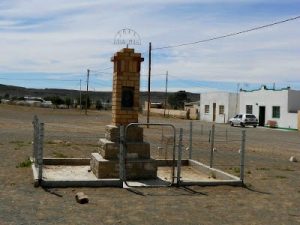
Google:/https://www.vwgc.org/visit-us/find-cemeteries-memorials/cemetary-details/5000108/,carnarvon-cemetary-northern-cape
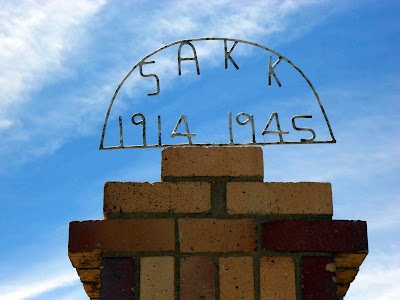
The letters “SAKK” – (Afrikaans for SA Cape Coloured) was added on top of the monument in 1975 when the name was changed from Cape Corps to SA Cape Corps
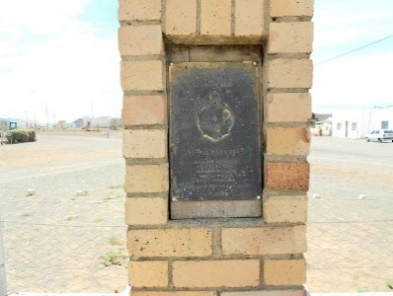
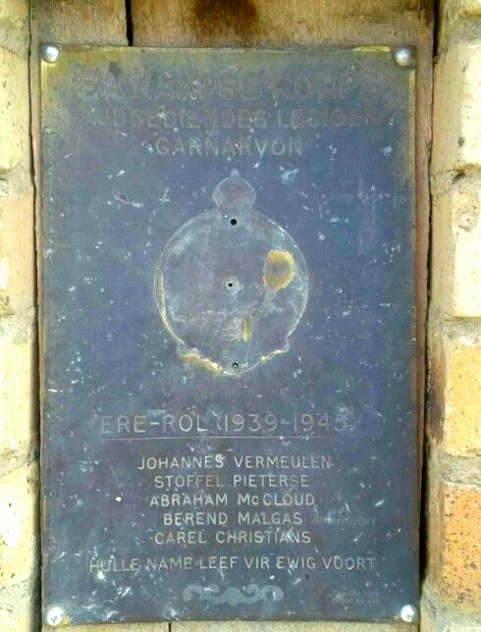
Memorial plague without Emblem
Google:/https://www.vwgc.org/visit-us/find-cemeteries-memorials/cemetary-details/5000108/,carnarvon-cemetary-northern-cape
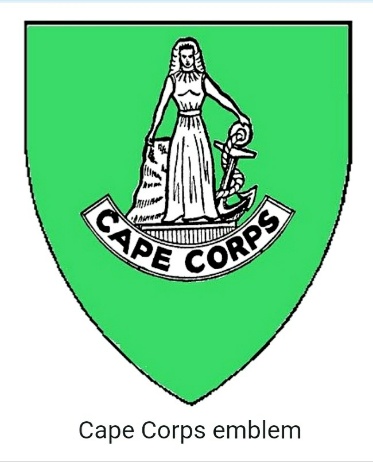
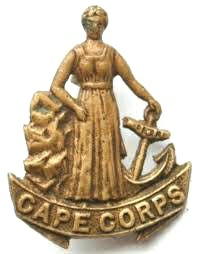
Emblem worn on the headdress
Google:/https://www.vwgc.org/visit-us/find-cemeteries-memorials/cemetary-details/5000108/,carnarvon-cemetary-northern-cap
Epilog
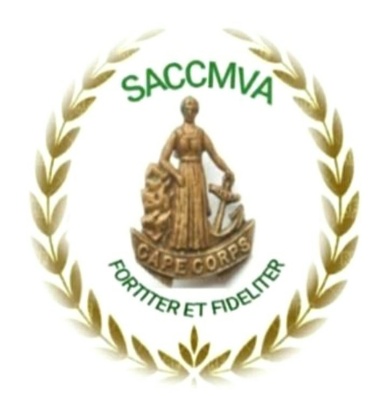
South African Cape Corps Regimental Association. (SACCRA)
The South African Cape Corps Regimental Association (SACCRA) is an organization dedicated to preserving the history and legacy of the Cape Corps, a military unit formed in 1795 to defend the Cape against British attack. Initially known as the Pandour Corps, the unit played significant roles in various conflicts, including World War I and II.
The SACCRA is affiliated to the South African Legion and Council of Military Veterans Organisation (SALCMVO).
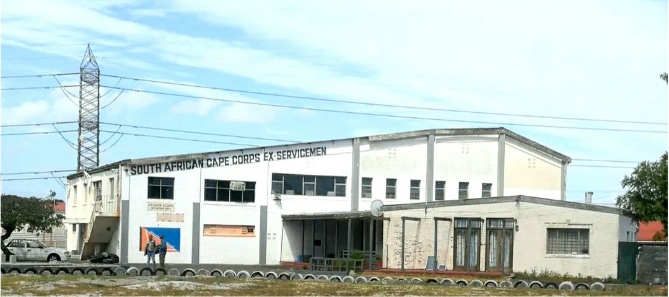
Google:/https://www.vwgc.org/visit-us/find-cemeteries-memorials/cemetary-details/5000108/,carnarvon-cemetary-northern-cape
Annual commemoration services take place at the SA Cape Corps Memorial Hall 27 Petunia Road, Athlone Cape Town, Western Cape
References:
Meta Artificial Intelligence
Google:/https://www.findgrave.com/cemetry/,27011975/carnarvon-main-cemetery
Google:/https://www.vwgc.org/visit-us/find-cemeteries-memorials/cemetary-details/5000108/,carnarvon-cemetary-northern-cape
Google:/https://lugerda.blogspot.com/2013/04/carnarvon-corbelled-house-and-monument.html?m=1

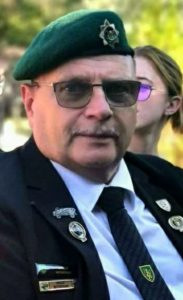
Ons moet die munisipale bestuur nader sodat ons as SACCMVA moet optrek en ñ Kranslegging daar van stapel stuur.